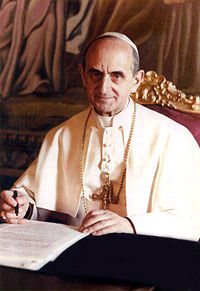
This year is 1700 years since the Council of Nicaea when Christians decided that Easter Day is:
The first Sunday after the first full moon on or after the vernal equinox.
The Church does not use the actual date for the vernal equinox, but a fixed date (March 21), nor does it use the astronomical full moon but the “ecclesiastical moon”.
The church has a 19-year cycle (the metonic cycle – named after Meton of Athens, 5th century BCE; the Babylonians followed this 19-year cycle from the 6th Century BCE). Every 19 years, the phases of the moon (pretty accurately) recur at the same time of the year. So, divide these 19 years into 235 lunar months of 30 and 29 days each. Each of these lunar months begins with an “ecclesiastical new moon”. The 14th day of such an ecclesiastical month, hence, is the ecclesiastical full moon).
Christians celebrated a common date for Easter between 325 and 1582. They were using the “Julian Calendar” – every fourth year was a leap year. But this wasn’t accurate, and the calendar was drifting out of line with the astronomical reality. In the “Gregorian Calendar” centuries are only leap years when divisible by 400. And to get the calendar back into alignment, 10 days were skipped. Pope Gregory XIII ordered that the day after October 4, 1582 be October 15. The Eastern half of the Church, which did not accept the pope’s right to make such decisions, continued with the Julian Calendar.
The two dates, East and West, still coincide when the full moon following the equinox comes so late that it counts as the first full moon after 21 March in the Julian calendar as well as the Gregorian. This happened in 2010, 2011, 2014, and 2017, and will happen this year, 2025.
This is how, in the West, Easter is calculated. Each year has a “Golden Number”: divide the AD year by 19 and add one to the remainder. 2025 divided by 19 is 106 with a remainder of 11. Add 1 to that remainder and you have the Golden Number for this year is 12. Golden Numbers for the year have been around for a good thousand years or so. Over many centuries, the Golden Numbers appear alongside Church Calendars. The Episcopal Church’s Book of Common Prayer Calendar includes the Golden Number of the ecclesiastical full moon from March 22 to April 18:

From The Episcopal Church’s Book of Common Prayer Calendar (left), the 2025 Ecclesiastical Full Moon after 21 March was 13 April [Golden Number 12]. That day is a Sunday. It is also the Astronomical Full Moon. So the first Sunday after that Full Moon is 20 April = Easter Day in 2025 in the West [and, coincidentally this year, in the East].
The World Council of Churches proposed calculating Easter from the actual equinox and the full moon at the meridian of Jerusalem (the scene of Christ’s death and resurrection). This year, Pope Francis again urged having a common date for Easter. I am fully supportive of this movement and think the Astronomical Easter the best option. I’m aware that the Eastern Church would have to make the bigger concession. Western Easter generally coincides with Astronomical Easter. The next time they do not concur is 2038 (Astronomical Easter: March 28; Gregorian Easter: April 25; Julian Easter: May 2 by Gregorian dating, April 19 by Julian dating). Then 2051, 2085, 2091. Eastern/Julian Easter coincides with Astronomical Easter far less often: only 16 times (including this year) to the end of this century (in comparison with 71 times for Western/Gregorian Easter).
I am hoping, as part of marking the 1700th anniversary of the Council of Nicaea, the vast majority of Christians will (again) from now on celebrate a common date of Easter – conscious that probably small minorities will continue current practices.
Do follow:
The Liturgy Facebook Page
The Liturgy Twitter Profile
The Liturgy Instagram
and/or sign up to a not-too-often email



The astronomical method would allow Easter to fall on March 21, which is unprecedented.
The Ecumenical Patriarch should state that he will not break communion with jurisdictions that, like Finland, use the Gregorian paschalion. In order to get everyone back together, we need to let them go further apart for awhile.
I am sorry to say, Timothy, that you are clearly incorrect. Let me repeat with emphasis what I wrote: The first Sunday AFTER the first full moon on or after the vernal equinox. Therefore, the earliest that Easter Day can occur is when the Full Moon falls on Saturday 21 March, giving Easter Day as Sunday, 22 March. Astronomical Easter Day cannot fall on 21 March (or earlier). Blessings.
But the astronomical equinox can occur on March 19 or 20.
Thanks, Timothy. Can you give me a year when Astronomical Easter falls on March 20 or 21? Much as I’ve tried, I cannot find one. Here and here are some of the original studies. Blessings.
The astronomical method would have given Easter on March 21 in the year 1666.